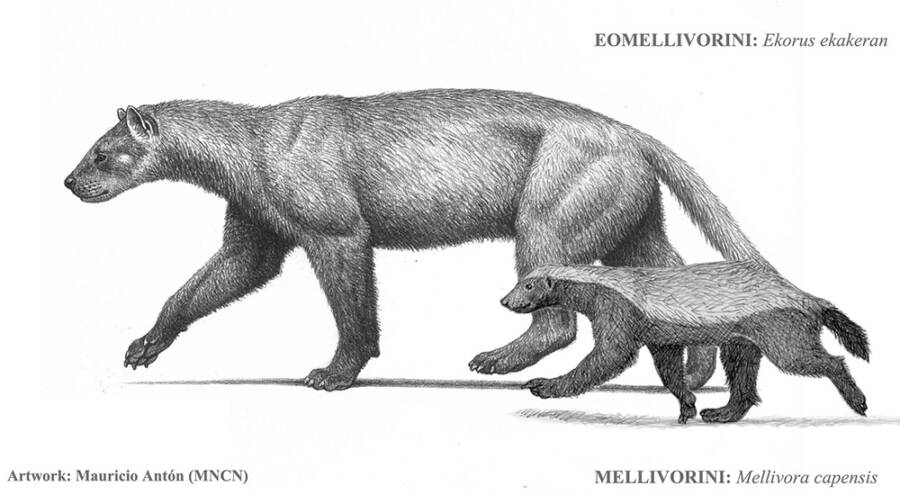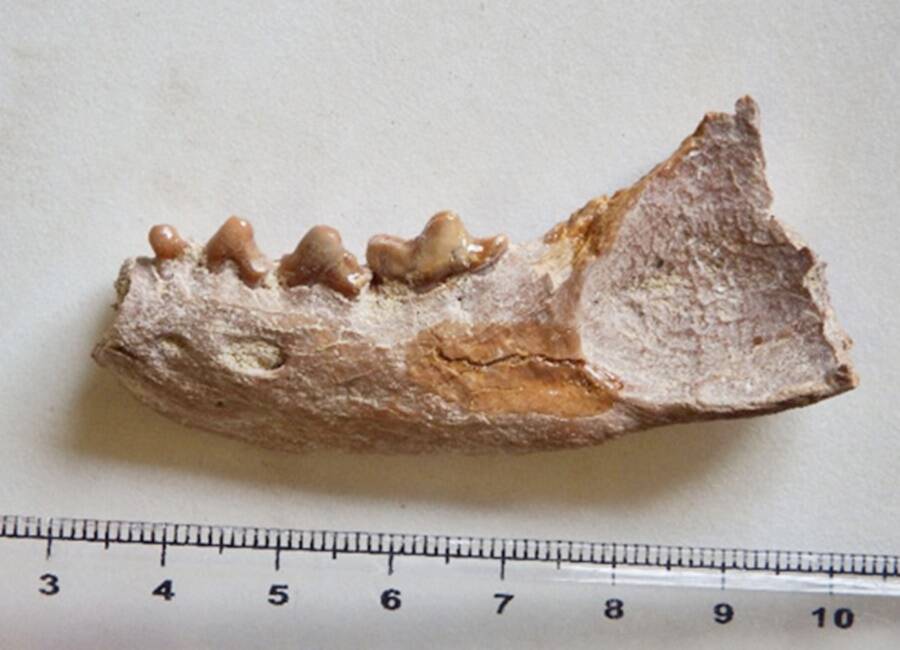The Mellivora benfieldi was smaller in size but possessed many of the same traits as its modern relative.

Alberto ValencianoPaleontologists found a trove of fossils belonging to M. benfieldi, a prehistoric relative of the modern honey badger.
The modern honey badger has a fearsome reputation, partly thanks to a certain viral video. And thanks to their sharp claws, thick skin, and bad attitudes, this reputation does seem to be deserved. But have you ever wondered what these animals’ prehistoric cousins were like?
According to Science Times, paleontologists have uncovered the five million-year-old remains of what appears to be a mammal similar to that of the present-day honey badger. The prehistoric fossils were dug up at the West Coast Fossil Park, a famous archaeological site in Langebaanweg, South Africa.
The extinct honey badger species Mellivora benfieldi was first described by Brett Hendey in 1978. Hendey had based his description on an analysis of a few fragmented mandibles. Now, the latest haul of rare M. benfieldi fossils have wielded a tremendous amount of new information about the extinct species.
“The new honey badger fossils we describe triple the number of known fossils and gives us a unique glimpse into its lifestyle and relationship to other similar mustelids,” said paleontologist Alberto Valenciano Vaquero.
“These new fossils demonstrate that this South African species is distinct from the late Miocene forms from Central Africa [Howellictis] and East Africa [Erokomellivora], as well as from the extant honey badger.”

Mauricio Antón (MNCN)Sketch comparisons of Eomellivorini and the modern honey badger.
Vaquero worked together with paleontologist Romala Govender to study the specimens of the prehistoric honey badger. Their new study published in Journal of Vertebrate Paleontology sheds light on the fascinating evolution of this group of mustelids, the family of carnivorous animals that includes weasels, badgers, otters, and ferrets, over the course of seven million years.
The study suggests that, while the honey badger represents the only living members of its subfamily of mustelids, long ago they were a thriving and diverse group.
Based on their findings, Valenciano and Govender suggest there were once two distinct groups of mustelids: the Mellivorini, which includes the living honey badger, the extinct species from Langebaanweg, and several other honey badger-like relatives, and the Eomellivorini, which possessed enormous body proportions.
The prehistoric relatives of many modern-day animal species have been uncovered before, like the North American beaver and the Castoroides. Most of the prehistoric species found have usually been much larger in size compared to their living, modern brethren. But things were a little different in the case of the newly discovered honey badger bones.
According to the study, the M. benfieldi was slightly smaller than the present-day honey badger. However, both species share similar traits. It seems that the Langebaanweg honey badger was similarly opportunistic and also had excellent digging abilities. The Eomellivorini, which also lived in prehistoric times, was likely gigantic in size.

Alberto ValencianoMandible of M. benfieldi dug up from the site.
Studying the fossils of the prehistoric honey badger has also given researchers a rare glimpse into the species life during a significant period.
“The Langebaanweg fossils are at a crossroads of climate and environmental change giving us insight into how animals adapted to these changes as well as insight into carnivore evolution in southern Africa,” Govender said.
The West Coast Fossil Park has long been heralded as an incredibly rich and well-preserved archaeological site. Scientists have uncovered a trove of specimens that dates back to 5.2 million years ago. Among the species uncovered at the site are saber-toothed cats, mongooses, bears, hyenas, relatives of the living giraffes as well as a variety of bird species and marine mammals.
“This is an incredible discovery!” said UCT paleontologist Anusuya Chinsamy-Turan, who was not involved in the new research on M. benfieldi. “Can you imagine, if it were not for the fossils at Langebaanweg we would have absolutely no idea of the rich biodiversity that once existed along the West Coast of South Africa.”
After this look at the prehistoric honey badger, read about the giant prehistoric armadillo known as Glyptodon. Then, learn the truth behind the mass extinction of Australia’s prehistoric megafauna.




